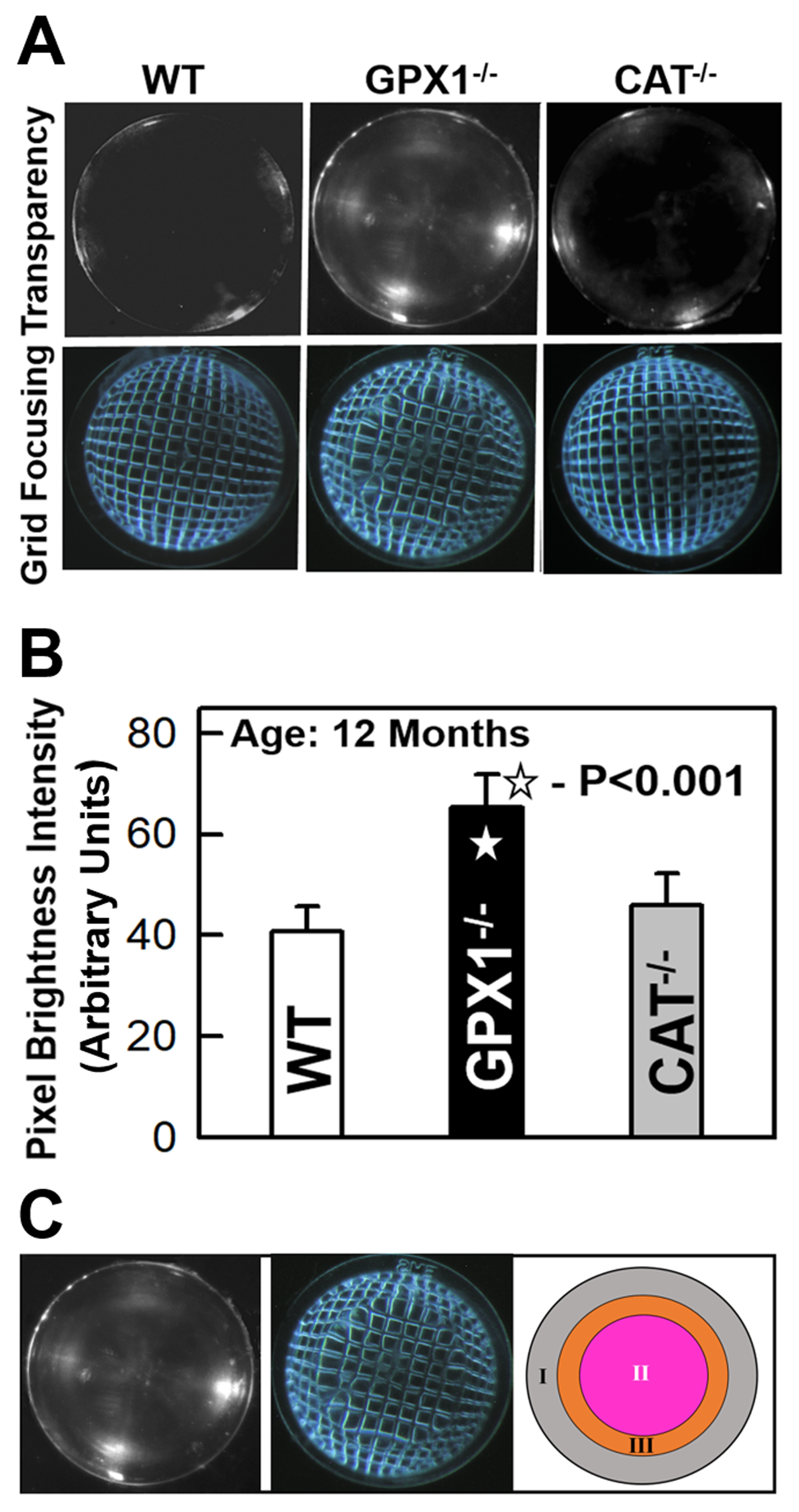Figure 2. Knockout of GPX1, not catalase, causes alterations in lens transparency and refractive properties. A: Comparison of lens transparency and grid focusing ability of 12-month-old lenses of WT, GPX1−/− and CAT−/− mice. GPX1−/− mouse lenses showed considerable loss of transparency compared to WT and CAT−/− (Upper Panel). Of note is the abnormal optical distortion aberration with the formation of three zones in the GPX1−/− lens in contrast to the CAT−/− lens, which resembles the WT lens (Lower Panel). There is no significant difference in 12-month-old WT, GPX1−/− and CAT−/− lens diameters (2 mm). B: Quantification of pixel brightness intensity to assess lens transparency. The higher the pixel brightness intensity, the
lower would be the lens transparency. Loss of lens transparency is statistically significant in (p<0.001) GPX1−/− and not in CAT−/− (p>0.05) compared to the WT. C: Dark-field image, grid focusing and schematics (not drawn to scale) of the three-zone formation in GPX1−/− (12- month-old lenses; lens diameter 2 mm). Eight lenses were used for each mouse model. Error bars represent standard deviations.<Fig_Med></Fig_Med>

 Figure 2 of
Varadaraj, Mol Vis 2022; 28:11-20.
Figure 2 of
Varadaraj, Mol Vis 2022; 28:11-20.  Figure 2 of
Varadaraj, Mol Vis 2022; 28:11-20.
Figure 2 of
Varadaraj, Mol Vis 2022; 28:11-20. 